 Kennet and Avon Canal Kennet and Avon Canal |
 |
|
|
|
MILE 32
|
Little Bedwyn and Great Bedwyn, Wiltshire : KAC32.00=KAC33.00 |
|

|
KandAC mile 32
|
|
|
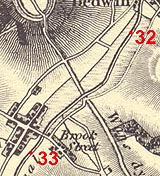
|
KandAC mile 32 - OS 1inch map, early 19th century
|
|
|
... canal and railway snake along side by side; the canal found this
route first ...
|
|
|
The Kennet and Avon Canal from mile 32 to 33 is climbing up the valley
of the River Dun. It passes by Great Bedwyn where there is a wharf.
The Great Western Railway line to the south west is on the north side
of the canal. The towpath is on the south side.
|
|
|
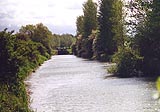
|
The canal eastward of Potter's Lock, looking westwards.
|
|
|
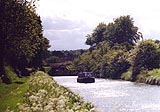
|
Boats leaving Potter's Lock, travelling eastwards.
|
|
|
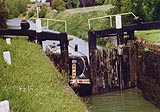
|
Potter's Lock, Little Bedwyn
|
|
|
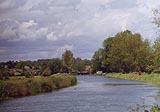
|
The canal westward of Potter's Lock, looking eastwards.
|
|
|
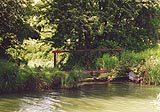
|
There is an overflow from the canal into the River Dun at about 33m
26ch.
|
|
|
The copse on the hill to the south is Foxbury Copse.
|
|
|
Bedwyn Dyke, an ancient trackway running south from Chisbury Hillfort,
is crossed by the canal. The dyke is one end of the Wansdyke, a linear
earthwork running from Inkpen Hill south of Kintbury, to Bath. The
dyke might be an accidental spill of soil by a busy giant, it is more
likely to have been built by King Caelwin, early 6th century, as a
defensive barrier or boundary marker?
|
|
|
The site of Burnt Mill lies to the north of the canal.
|
|
|
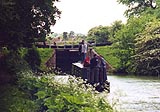
|
Boat approaching burnt Mill Lock from eastwards.
|
|
|
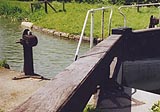
|
Burnt Mill Lock, Little Bedwyn
|
|
|
Parish boundary Little Bedwyn - Great Bedwyn: SU28156470
|
|
|
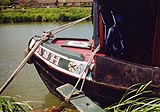
|
Boat Ash moored eastward of Great Bedwyn; neat hitches and a neatly
hitched gangplank.
|
|
|
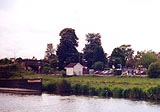
|
Great Bedwyn Station.
|
|
|
... what do you mean you'd like a train as well ...
|
|
|
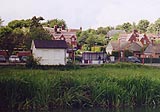
|
Great Bedwyn Station.
|
|
|
Great Bedwyn Station serves some mainline trains, most of which rush
through at high speed, and is a terminus for local trains out of
Paddington, London via Reading; there is a siding for parking trains
to the west, level with the church.
|
|
|
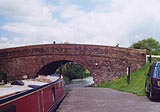
|
Bedwyn Wharf Bridge, Great Bedwyn
|
|
|
Great Bedwyn village lies to the north, shops, pubs, etc, and a
railway station. The Three Tuns is straight up the High Street from
the canal.
|
|
|
Great Bedwyn was the base of the Lloyd Family of stone masons. John
Hoare, of this family(?), was engineer and surveyor of the River
Kennet Navigation, an earlier part of the canal, in 1718. In the early
19th century the lloyd family were masons for the canal, building and
maintenance work. The Bedwyn Stone Museum is based on their mason's
yard - not to be missed.
|
|
|
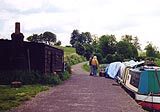
|
Bedwyn Wharf, Great Bedwyn
|
|
|
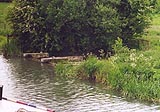
|
Overflow weir westward of Bedwyn Wharf.
|
|
|
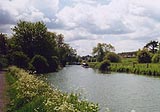
|
KandAC winding point 32.79
|
|
|
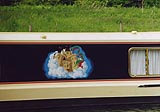
|
Boat castles in the Air; imaginative painting.
|
|
|
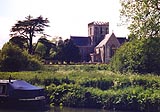
|
The church, Great Bedwyn.
|
|
|
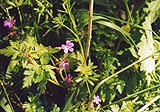
|
Flowers.
|
|

|
Kennet and Avon Scrapbook 2000
|
|
 Kennet and Avon Canal
Kennet and Avon Canal



















